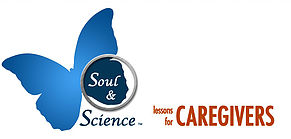WEB MATERIALS

Web Articles
Awdish, Rana L.A. and. Berry, Leonard L “Making Time to Really Listen to Your Patients” Harvard Business Review October 09, 2017
Barrier, Patricia A.; Li, James T.-C. ; Jensen, Norman M. “Two Words to Improve Physician-Patient Communication: What Else?”,Mayo Clinic Proceedings, Volume 78, Issue 2, 2003, Pages 211-214, ISSN 0025-6196. (for purchase)
Detmar SB, Muller MJ, Wever LDV, Schornagel JH, Aaronson NK. “Patient-Physician Communication During Outpatient Palliative Treatment Visits: An Observational Study.” JAMA. 2001;285(10):1351-1357. doi:10.1001/jama.285.10.1351
Ha, Jennifer Fong, and Longnecker, Nancy. “Doctor-Patient Communication: A Review.” The Ochsner Journal 10.1 (2010): 38–43. Print.
Kee, Janine W.Y.; Khoo, Hwee Sing; Lim, Issac; Koh, Mervyn Y.H. “Communication Skills in Patient-Doctor Interactions: Learning from Patient Complaints” Health Professions Education. Available online 20 April 2017.
Ranjan, Piyush, Archana Kumari, and Avinash Chakrawarty. “How Can Doctors Improve Their Communication Skills?” Journal of Clinical and Diagnostic Research : JCDR 9.3 (2015): JE01–JE04. PMC.
Websites
Academy of Communication in Healthcare (ACH)
Whether you are an RN or a health system executive, a physician or a healthcare educator, an academic researcher or student, a patient or a caregiver, you know that communication is the key to exceptional patient care. For nearly 40 years, the Academy of Communication in Healthcare (ACH) has been at the forefront of research and teaching relationship-centered healthcare communication. If you are looking for ways to improve patient safety, interdisciplinary teamwork, patient satisfaction scores, or just want to develop your individual communication skills, ACH can help.
EACH: International Association for Communication in Healthcare
EACH: International Association for Communication in Healthcare is a global organization whose mission is to promote healthcare communication between patients, relatives and healthcare practitioners that is effective, patient-centered and evidence-based.
